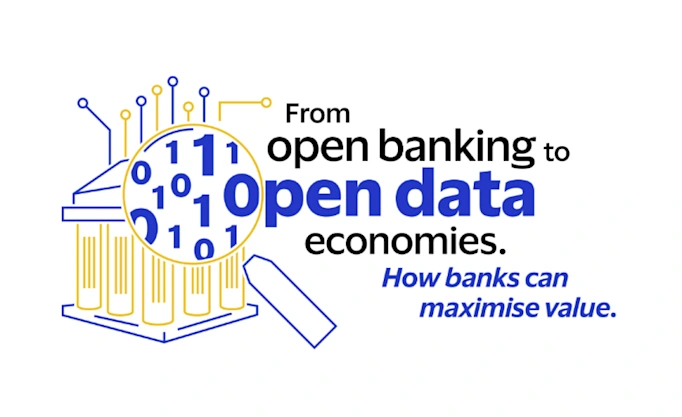Why automated finances aren’t a death knell for banks

Automated financial services bringing about the demise of banks is being talked about as if it’s a done deal. But don’t believe the hype. In fact, we think the opposite is true; automation is the opportunity of a lifetime for the banks that embrace it to transform their business – and some of them have already gotten started.
It seems to be gaining steam – this narrative that the fintech revolution and the coming automation of personal finance and advice will be the death knell for banks. A TechCrunch story even proclaimed “Automation will be the end of banks as we know them”.
But in reality, banks have a level of customer trust and loyalty that is difficult to replicate. They have the financial capability to deliver smart, automated services at scale to a customer base that is ready and waiting. So what’s the problem?
When people can share their financial data with whoever they choose, manage finances from multiple providers all in one place, and seamlessly switch to the best-value products and services in the market, banks need to give their customers a good reason to stay.
Money on autopilot
The argument goes like this: unless the banks can adopt the kind of automated, intelligent services that the fintechs offer (or want to), they will simply become a utility – pipes and wires that store money and move it around.
Most of these intelligent services – which are being envisioned by challenger banks, startups and fintechs – all aim to do the same thing: put people’s money on autopilot.
Right now, this means using a customer’s financial data to understand their needs and desires through all of life’s stages – and offer an invisible, seamless service that makes financial decisions easier. This could be offering customers a better deal on their mortgage and helping them refinance in a couple of clicks. It could be finding them a savings account that offers a higher interest rate – and letting them transfer the money quickly.

But in the future – sometime in the next 20 years or so – we’re talking about fully automated finances and advisory. And many argue that fintechs are the only ones who can do this – that they have the data expertise, innovative DNA and first-mover advantage to crush the banks that would compete.
This is bogus.
Yes, the banks’ willingness to adopt new technologies and disrupt existing business models has been slowed down by the reality of dealing with their legacy systems, bureaucratic governance and a change-resistant culture. But this is shifting – albeit slowly – and there are major incumbents making major moves to embrace this tech-driven and automated future.
They’re gearing up in two main ways:
Embracing the possibilities of tech
The technology is out there to allow any bank to use the full picture of their customers’ financial lives to offer relevant and personal recommendations that more effortlessly put people on a path to better financial health. And banks are the ones best positioned to do this.
Unlike fintechs – who would be starting from scratch with any “money on autopilot” solution – banks can pair their long-term customer relationships, data and authority with the right tech to beat their competitors to market. And considering their central role in people’s finances, the banks will at least get a fair shake to offer a better service before customers flee for a fintech.
Santander, for example, re-tooled their digital-only Openbank to offer intelligent micro-investing services, as well as account aggregation features to give users the full overview of their finances. It now counts more than one million customers in Spain.
Instead of innovating in-house, banks like ABN AMRO (a Tink partner) are partnering with fintechs to quickly launch digital-first services that make it easier for users to manage finances on a mobile phone.
Disrupting themselves
They’re also picking their segment and going after it, fundamentally disrupting their business model in order to attract new customers – and infuse their legacy institutions with the innovative and agile approach of the tech world.
The parent bank of one of our partners, BNP Paribas Fortis, launched Hello bank! a couple of years ago – an entirely new brand and service that aims to redefine what a bank is for the 18-28 year old market segment.
BBVA, on the other hand, started its digital journey about eight years ago with its BBVA Wallet payment app. The bank also acquired big data startup Madiva, and made €300 million with their algorithm that used external data to improve the bank’s relationship with unengaged customers.
Bet on automation to beat the fintechs
There are a lot of ways that a fintech will be more innovative and faster to market than a large, legacy bank. But it’s a short-term advantage. The whole market is gearing up for automation, and the banks of today aren’t the ones of yesterday; long-term they’re becoming more entrepreneurial, experimental and tech-driven. In short, more like fintechs.
The current open banking regulations – and what we imagine the next iterations will be – will not create a market open enough for the fintechs to conceivably compete with a bank. So if any bank truly decides they want to make money on autopilot a reality – and they relentlessly focus on building the best products for their customers – they will beat any fintech to the finish line.
More in Open banking

2024-07-22
1 min read
Commercialising open finance – a VCA report
Tink worked with Visa Consulting and Analytics on a new white paper which details the state of play, direction of travel, and best open finance practices from around the world.
Read more

2024-04-08
6 min read
How the Instant Payments Regulation will change the EU payments landscape
We explore the details of the Instant Payments Regulation, as well as its benefits for consumers and PSPs – such as increased convenience, more innovation in the market, and reduced costs.
Read more

2024-03-07
6 min read
Smart moves with smart meters: how commercial VRP could support pay-as-you-use billing models
Discover how variable recurring payments can transform smart meter billing into a more flexible user experience – and utility providers more ways to support financially vulnerable customers.
Read more
Get started with Tink
Contact our team to learn more about what we can help you build – or create an account to get started right away.
